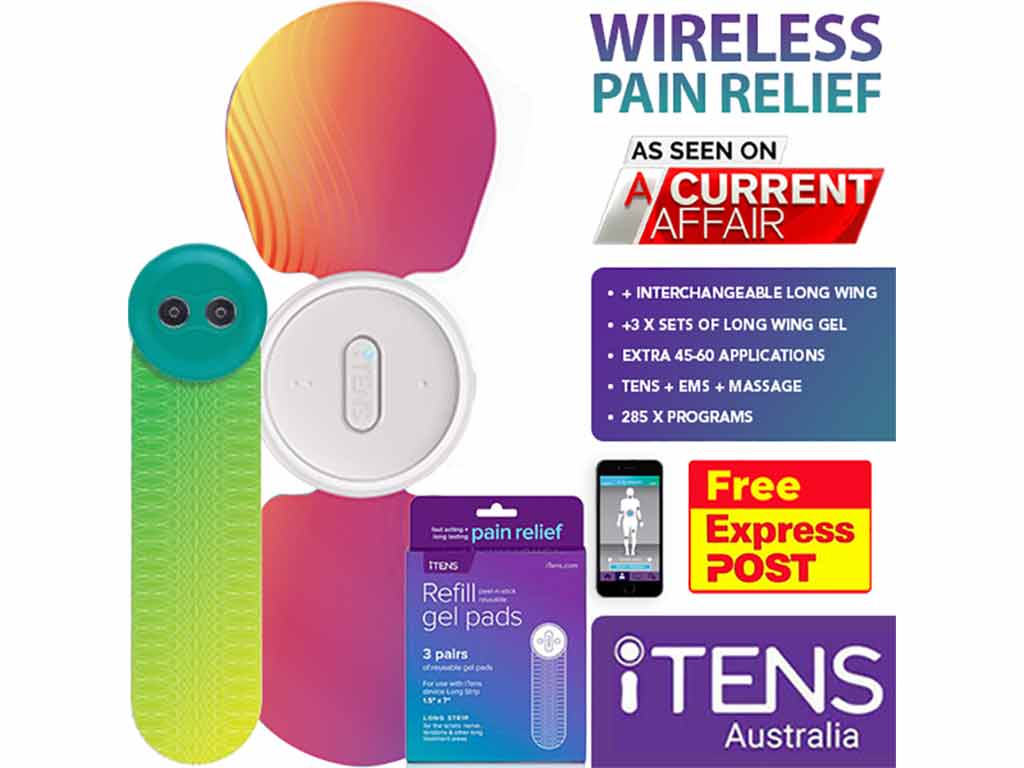
Physical therapists and other medical professionals utilise Transcutaneous Electrical Nerve Stimulation (TENS) as a natural method of pain relief. It can help manage different types of pain in adults, including muscular pain. A TENS machine for muscle pain sends mild electric currents to the affected area through sets of electrode patches. Then, TENS activates the pain-gating and endorphin release mechanisms. Subsequently, people experience a reduction in pain intensity. Moreover, they can enjoy the convenience of having a portable electronic device.
Typically, individuals visit a hospital or pain clinic for a TENS treatment session. However, technological advancements allow them to purchase and use a TENS unit anywhere. Additionally, muscle pain can be debilitating and frustrating. It can affect daily activities and quality of life. Hence, having TENS is valuable as it provides immediate relief. Nevertheless, they should know the elements surrounding it. This article will present the TENS machine, including how it works and its benefits.
What is a TENS Machine for Muscle Pain?
A TENS machine for muscle pain is a handy electrical device. It is one of the forms of treatment that lessens discomfort without using medications or intrusive procedures. Instead, TENS utilises gentle electrical impulses to send to the pain area. People place adhesive electrode pads on the skin surface to deliver the electrical currents.
Individuals can relieve muscular pain by buying a personal unit. They can choose from different types. For instance, the traditional model is handheld. It comes with wires. Hence, it tends to be the more affordable device in the market. Also, there are wireless TENS machines. These are more expensive because they offer more convenience and freedom of movement. Nevertheless, both kinds provide analgesic effects as a pain reliever.
Generally, the TENS unit is safe. However, being cautious is vital to prevent health issues. People should consult a healthcare professional beforehand for underlying medical conditions or concerns. Additionally, they should note that the success of TENS varies from person to person. Thus, it is essential to experiment with different settings and electrode placements.
Causes of Muscle Pain
- Overuse of muscles, such as excessive exercise or repetitive motion, can lead to muscular pain. Athletes or individuals with physically demanding jobs frequently experience this.
- Straining the muscles by lifting heavy objects, sudden movements, or incorrect form during exercise can lead to pain.
- Anxiety and stress can cause muscle tension, leading to pain and discomfort. Often, people feel this in the neck, shoulders, and back.
- Involuntary muscle contractions, known as muscle cramps, can cause intense pain. These can be due to dehydration, electrolyte imbalance, or muscle fatigue.
- Muscle pain can happen because of general or sports injuries. Some examples are sprains, strains, or tears.

How a TENS Machine for Muscle Pain Works
TENS machines for muscle pain produce low-voltage electrical pulses to the affected muscles. Electrical nerve stimulation can trigger the release of endorphins. These are the natural painkillers of the body. Their production aids in pain management because they bind to the opiate receptors in the brain and spinal cord. Subsequently, this helps reduce pain perceptions and induce relaxation.
Moreover, the device can activate the pain-gating mechanism. It is based on the Gate Control Theory of Pain. According to this theory, when the electrical impulses from the TENS device are delivered to the nerves, they can effectively block the pain messages from being transmitted to the brain. This helps reduce the sensation of pain, making it more manageable and providing temporary relief.
Another mechanism of TENS is stimulating the muscles. The electrical impulses cause the muscles to contract, similar to how they do during exercise. This stimulation helps improve blood flow to the area. As a result, it lessens inflammation and promotes healing. Additionally, the contractions from the electrical stimulation unit can relax tense or spasming muscles, providing further pain relief.
Frequencies and Intensities
The TENS device utilises different frequencies and intensities to relieve aches and discomfort. The former refers to the number of electrical pulses the machine produces per second. Frequency is measured in hertz (Hz). Low-frequency TENS (2-4 Hz) is suitable for chronic pain conditions, while high-frequency TENS (50-120 Hz) is more appropriate for acute pain management.
Meanwhile, intensity refers to the strength of the electrical current delivered to the body. TENS units allow for adjustable intensity settings, enabling the patient to find the most effective level for pain relief. Low intensities are for sensitive areas, while high are for larger pain areas.

Benefits of Using a TENS Machine for Muscle Pain
Using a TENS machine for muscle pain is beneficial. One reason is that it is a natural method of pain relief. It does not necessitate the intake of prescription medications or invasive medical procedures. Also, people can multitask when administering TENS. This is especially true for those with a wireless device. They can attach the non-wired electrode pads to the skin. Then, they can read or cook.
Another advantage of utilising a TENS unit is its convenience and ease of use. The machine is portable and compact. Thus, individuals can apply it at home or on the go. They can easily wear or place it on specific body parts, directly targeting the source of muscle pain. TENS is a practical choice for individuals who experience chronic muscle pain or discomfort.
Furthermore, users can administer TENS for other types of pain. For instance, it can alleviate neuropathic pain from conditions like complex regional pain syndrome. In addition, TENS machines can manage musculoskeletal pain, such as rheumatoid arthritis and other joint pain. TENS can also reduce post-operative pain and menstrual cramps. Pregnant women can apply TENS for labour pain as well.
Is It Safe and Effective?
Professionals and individuals commonly use a TENS device for muscle pain relief. While generally considered safe, there are certain precautions to consider. Consultation with a doctor is advisable beforehand. The reason is that it may not be suitable for everyone, particularly those with pacemakers or epilepsy.
Regarding effectiveness, TENS has shown promising results in managing muscle pain. It delivers mild electrical pulses using sticky electrode patches. Numerous studies have reported positive outcomes, including pain relief, improved muscle function, and reduced reliance on medication. However, it is essential to note that individual responses to TENS therapy may vary.
Conclusion
The TENS machine for muscle pain is a compact pain relief device. It uses mild electrical currents to stimulate sensory nerves and relieve muscle discomfort. By placing electrode patches on the pain site, TENS interferes with pain signals and stimulates the production of endorphins. Moreover, it improves blood flow. These mechanisms effectively alleviate muscle pain through analgesic effects. The natural pain reliever is customisable. Users can adjust the frequency and intensity depending on their preferences and needs.
TENS provides various benefits. One of these is its non-invasive and drug-free approach to pain relief. A single treatment does not cause the adverse side effects associated with traditional techniques. Additionally, it offers convenience and portability for at-home and on-the-go use. Furthermore, it can help with more conditions, not just muscular pain. These include menstrual pain, arthritis, nerve pain, and labour contractions. With its increasing popularity and proven effectiveness, TENS is valuable to many people.







